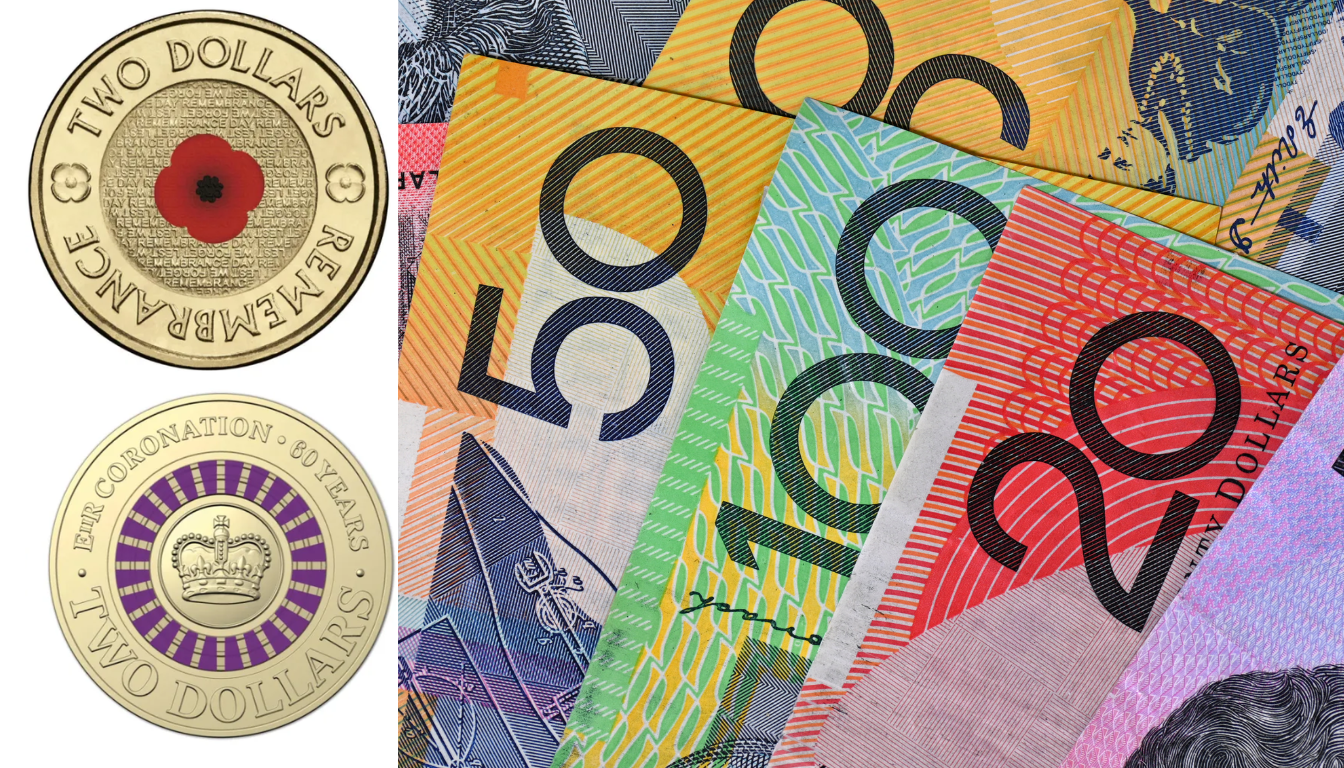Next time you receive change, take a closer look at your $2 coins. While most will be the standard gold-colored variety, you might stumble upon something special – a coloured coin that could be worth hundreds of dollars more than its face value.
The story of Australia’s coloured $2 coins began in 2012 when the Royal Australian Mint made history by releasing its first-ever coloured circulating coin. This groundbreaking release, the Red Poppy coin, has become a prized item among collectors and continues to command impressive prices in today’s market.
Matthew Thompson, director of Thompsons Coins and Collectables, explains that the Red Poppy coin holds particular significance. “These coins are currently selling for between $200 and $300, which represents an extraordinary return on their original $10 price tag when they were first distributed through RSL branches,” Thompson notes.
The Red Poppy coin’s design features a striking red poppy flower at its centre, created to commemorate Remembrance Day and honor those who served in various conflicts. What makes this coin particularly special is its limited mintage – only 500,000 were produced, making it one of the rarest circulating coins in modern Australian history.
Following the success of the Red Poppy coin, the Royal Australian Mint released another coloured masterpiece in 2013 – the Queen’s Coronation commemorative coin. This elegant piece features purple stripes and St Edward’s Crown at its centre, celebrating the 60th anniversary of Queen Elizabeth II’s coronation. With a mintage of one million pieces, it shares the distinction of being among the lowest-minted coloured coins ever to enter circulation in Australia.
The Queen’s Coronation coin typically sells for between $50 and $100, but there’s a special version that commands even higher prices. “The C Mintmark version, which features a small ‘C’ for Canberra, can fetch over $500,” Thompson reveals. This particular variant has become highly sought after by serious collectors.
However, not every coloured coin in your change will be worth a small fortune. Recent releases, while attractive and interesting, may not hold the same long-term value as their predecessors. For example, the Australian Open commemorative coins, recently released through the Mint and Australia Post, saw initial excitement with some versions selling for up to $155 on online platforms.
Thompson advises caution when it comes to newer releases. “The staying power of certain themes can be questionable,” he explains. “In the $2 coin market, enduring value tends to come from pieces like the Red Poppy Coin, which connects with broader historical and cultural significance. The Anzac war theme resonates with a much wider audience than some more contemporary subjects.”
For those interested in coin collecting, Thompson suggests focusing on the hobby’s educational and historical aspects rather than potential financial gains. “Any unusual coin is worth keeping if you’re genuinely interested in numismatics,” he advises. “Use these pieces as stepping stones to learn about history. For instance, if you find a 1996 $1 coin featuring Henry Parkes, take time to research the father of Federation. The educational value often exceeds any monetary worth.”
When searching for valuable coloured $2 coins, condition is crucial. Coins in circulation naturally suffer wear and tear, which can significantly impact their value to collectors. The most valuable examples are those that have been carefully preserved and show minimal signs of use.
For newcomers to coin collecting, Thompson recommends:
- Carefully examine your change, particularly $2 coins
- Research any unusual finds to understand their significance
- Store potentially valuable coins safely to preserve their condition
- Join local coin collecting groups to learn from experienced collectors
- Be wary of paying premium prices for recent releases without proven long-term value
The market for coloured $2 coins continues to evolve, with new commemorative releases appearing regularly. While not every coloured coin will become a valuable collector’s item, the historical significance and limited mintage of pieces like the 2012 Red Poppy and 2013 Queen’s Coronation coins have secured their place in Australian numismatic history.
For the average person, finding one of these valuable coins in their change would be like discovering a small treasure. While such discoveries are becoming rarer as these coins are increasingly removed from circulation by collectors, the possibility still exists. This potential for discovery adds an element of excitement to something as mundane as checking your change.
Whether you’re a serious collector or simply curious about the coins in your pocket, understanding the value of these special releases offers a fascinating glimpse into the intersection of currency, history, and collecting. While not everyone will strike it rich finding rare coins, the hobby provides an engaging way to connect with Australia’s cultural heritage and commemorative history.
